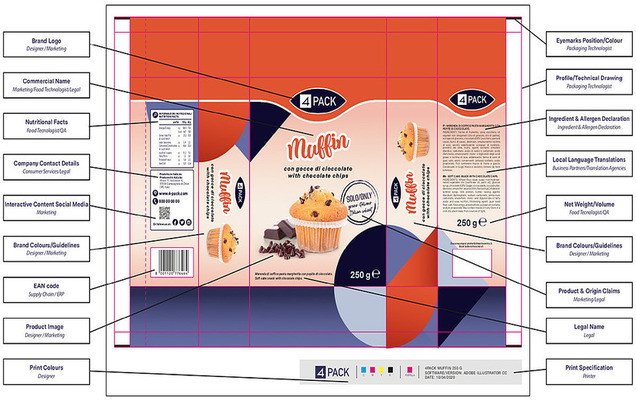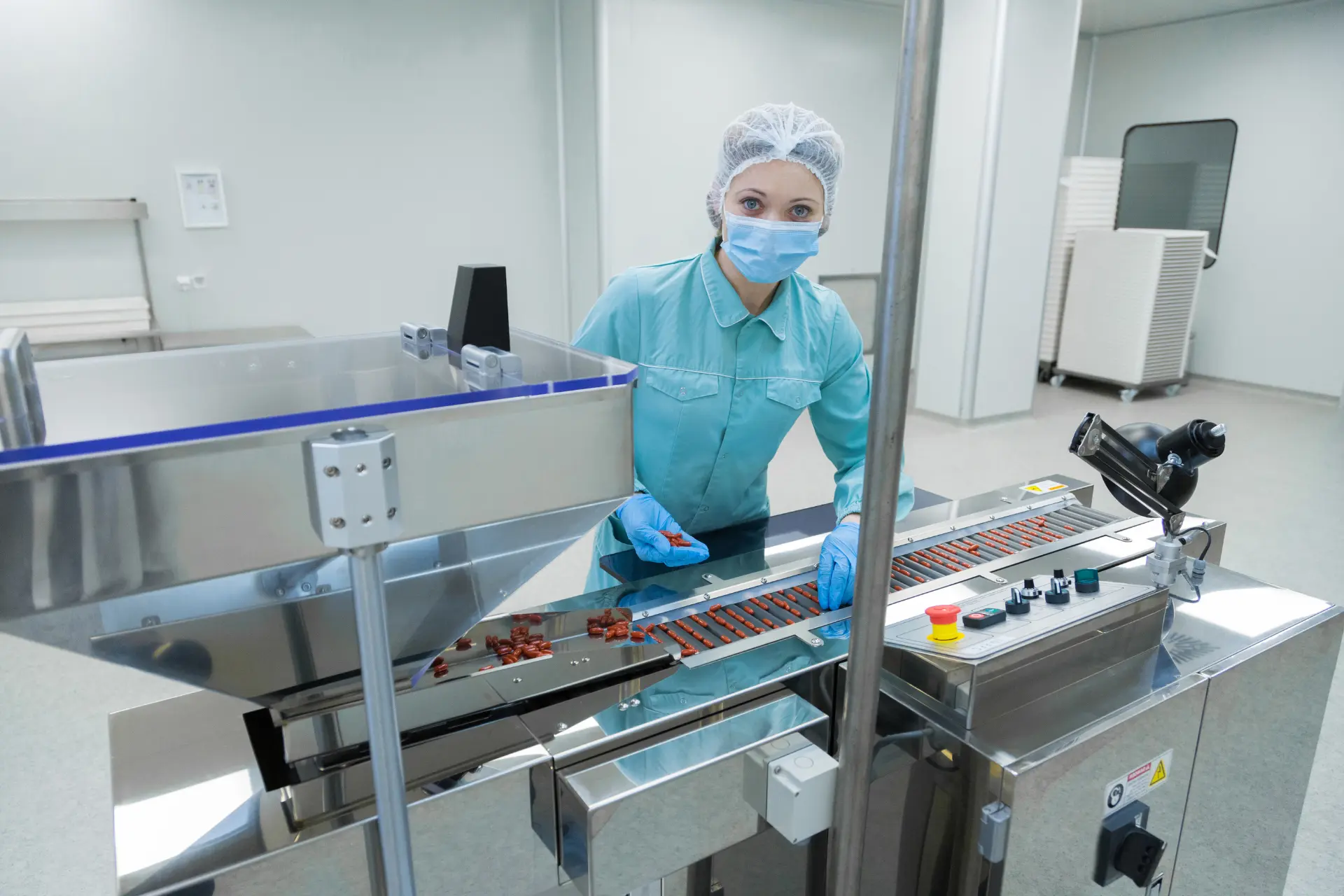Getting artworks approved can be challenging! If you are reading this then you know just how complex it can be but it does not need to be.
There’s no doubt that it’s a highly complex process, with multiple moving parts and a whole host of variables to be considered. Yet it can often feel as though the point the whole thing becomes “stuck” and delays are incurred is almost right at the end, when it comes to creating and approving the all-important packaging artwork.
Graphic services vendors (and we at 4Pack!) talk a lot about ensuring a “Right First Time” approach. When we say that of course, we don’t mean that we expect literally every artwork to be approved without amends (that may be somewhat unrealistic); but an average of 1.6 rounds is generally considered to be a very good industry target.
That said, for food & beverage manufacturers who are currently going through 4 or 5 “rounds” of amends (or often more) before approval, getting anywhere near to just 1 can sound like a pipedream! It may be assumed that this is only achievable in a larger organisation, or conversely in organisations without lots of stakeholders involved.
The good news is that no matter what size and structure your business, it is easier than you think to significantly reduce the amount of time the artwork approval process takes – and to gain much more control in terms of compliance, consistency and brand protection whilst doing so!
In this first of a two-part post, we’re going to look at 5 key steps you can take to lay the foundations for artwork success. In the second part of this post, we’ll go on to outline our top tips for implementing your artwork approval process, and nailing a “right first time” methodology.
Ready? Let’s dive in.
No. 1 – Go Digital
One of the most impactful things you can do to streamline your artwork creation and approval is to “go digital” with as much as you can of the upstream processes and the collation of information which will ultimately end up on pack.
That means moving away from email trails and the use of multiple documents or spreadsheets (often stored in disparate folders and servers), over to a central digital solution which allows all stakeholders to input, output, reference and verify all the information which will be fed into the artwork.
When we examine any artwork in detail – as you can see here with our “4Pack Muffin” – it becomes apparent that it includes inputs from multiple teams. Much of this information will be interconnected, so managing it holistically makes sense for lots of reasons, but in particular to ensure that the information on pack is accurate and compliant.
No. 2 – Centralise & Collate
Bringing all the of the key stakeholders into the process and working together on the same system presents numerous benefits. In terms of preparation for artwork, it provides transparency such that everyone involved is able to see, align on (and approve) the same version of information, establishing a “single source of truth”. No more version uncertainty or email tennis!
When everything’s centralised, it’s also much easier to automatically identify what may still be missing: for example, is there a final print specification available, have any claims going on pack been given legal approval, what markets will the product be distributed in, has everything been approved in the primary language such that any translations can be commenced etc.
Having all of this content collated and approved before the artwork stage begins is crucial. The good news is that going digital with the end-to-end management of the process considerably reduces the overall time taken in getting products ready for that artwork stage to progress.
No. 3 – Facilitate Collaboration
It’s important to stress that “going digital” with your product launch management is not the same as simply using collaborative software tools such as MS Teams or Slack. This is about providing a structured process which integrates all facets of your product development and product information management with your artwork, asset and content management.
When it comes to the Artwork stage specifically, there’s likely to be multiple internal and external parties involved including representatives from different sites or markets, perhaps third-party QA or regulatory teams, design and reprographics agencies, printers, retailer teams and so on.
Use permissions to allow visibility and actions as appropriate: for example, a packaging design agency should be able to see and download the design brief, key brand assets and print specification, and then upload design files for approval; but you don’t need them to see your product development information.
No. 4 – Automate mandatory information
There is a lot of information on pack which simply HAS to be there, and must be represented in clear and consistent ways – whether that be regulatory or brand related.
A common reason for artworks being rejected is that either information is missing, or key variables have not been accounted for, e.g. different allergen statements by market, or different manufacturing site information. Moving to a digital management approach means you can build in automated rules and checks with respect to the information or brand assets being fed through to artwork based on key parameters.
Not only does this increase the chances of achieving Right First Time at artwork, but (most importantly) it also protects the brand from potential human error in putting products into market without key inclusions.
No. 5 – “Lock” Your Design
We’ve all been there: those seemingly never-ending “tweaks” to the design details or front of pack information. Each amend request in and of itself is “only small”… but the cumulative effect can be significant, both in terms of time (especially when each change triggers a new approval round), and in terms of cost.
In our experience, one of the main reasons this often happens is that packaging design is in effect happening in parallel to packaging artwork. In reality, these are two quite distinct processes; even when you are using the same central system to manage them (as we recommend), it’s important to keep the two stages separate. Make it clear within the project plan when design is to be “locked”, and no more layout or aesthetic changes will be permitted.
Preparation here is again the key. Coming back to our point 2 above, by centrally collating and verifying all the information that relates to the artwork or needs to be on-pack before it is then “married” to the design layout, the artwork process is made considerably more streamlined and robust.
Congratulations…. You’re now ready to implement your artwork approval process with “Right First Time” firmly achievable! In our second part of this post we’ll look at the practical ways to benefit from your preparation to maintain speed to market and control at the final launch hurdles.
4Pack exists to help Food & Beverage manufacturers and brands of all sizes to push innovative, safer products to market across channels quickly. If you want to turbo charge your product launch process, book a demo with one of our experts.



